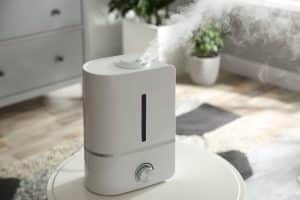Eye drops can provide instant soothing relief to irritated eyes. It’s quick and easy to apply these drops – but how do they actually work, and why is it that you’re able to sometimes taste them? In this article, we take a closer look at what eye drops do, how to avoid tasting them, and if they are suitable to be used with contact lenses.
What do eye drops do?
Your eye health is paramount, and it’s important to ensure your eyes are properly hydrated. Without enough moisture, they can become dry, sensitive and red. You may even notice that your vision becomes blurry.
There are many reasons why your eyes may not be moisturised enough. For example, prolonged screen time can damage your eyes, making them feel sore and irritated. You’re also more likely to experience discomfort in your eyes if you spend time in air conditioned or heated environments, or if it’s particularly dusty, windy or cold.
Eye drops are designed to keep eyes moist, providing soothing relief so that you no longer feel irritation or discomfort. The liquid formula is applied directly to the surface of the eye. Eye drops are applied in small amounts, such as a single droplet or a few drops. It’s important to always read the product leaflet or packaging to ensure you know how many drops to apply, as well as how often you should use them.
When applied to the eyes, the eye drop solution interacts with your eye’s natural tears. When you close your eyelids, this allows the solution to spread to moisten and lubricate the eye surface. Opening your eyelids then causes the solution from the drops and your own tears to reform. The solution is then released each time you blink, providing instant comfort and relief.
There are different types of eye drops available, many of which have been specially designed to target a specific symptom. For example, TheraTears® Dry or Tired Eye Drops work to provide immediate, long-lasting relief for dry eyes. Formulated with hyaluronic acid, these eye drops are designed to lubricate and replenish dry or tired eyes. They also feature witch hazel to soothe the eyes and reduce puffiness, and Ginkgo biloba to protect the eyes from free radicals.
Generally speaking, most eye drops are intended to be used as and when you feel like you need relief. However, if you notice that you’re using eye drops on a regular basis, this could be a sign of an underlying problem that needs to be addressed. In this case, you should speak to your optician, doctor or pharmacist for alternative treatment advice.[1]
In some cases, medicated eye drops may be needed to treat a specific condition or injury. Prescribed by medical professionals, medicated eye drops are often used to speed up the healing process, as well as reducing pain and discomfort.
Why can I taste eye drops?
When using eye drops, you may find that you get a taste of the drops in your mouth. In some cases, you might even feel the drops running down your throat. This is due to the fact that the tear duct which is responsible for draining tears to your nose also ends up draining some of the eye drop. Since the tear ducts are connected to the nose and throat via the sinuses, you may end up being able to taste or feel the drops. Although this is completely normal and safe, you can prevent this from happening by gently pressing on the tear duct once you have applied your eye drops.
Depending on the type of eye drops you use, you may experience some other side effects too. Experiences can vary, but it’s not uncommon to notice stinging or itching in the eye and blurred vision immediately after use. These side effects should ease off within a few minutes as your eye adjusts to the drops. However, if these side effects persist or worsen, you should seek advice from a doctor or pharmacist.[2]
Can you use eye drops with contacts?
There are eye drop formulas available that have been specially designed so that they are safe to use while wearing contact lenses. However, there are some drops on the market that you should avoid if you are a lens wearer. To make sure your eye drops are safe to use with your contact lenses, it’s important to follow the advice provided on the packaging or on the leaflet enclosed in the packet. This will state whether or not the drops can be used by contact lens wearers.
Applying eye drops as a contact lens wearer is simple. Unless instructed otherwise, you should remove your contact lenses before applying your eye drops. You should then wait 15 minutes before putting the lenses back into your eyes.
If you’re unsure if your eye drops are safe to use with lenses, or you’re not sure how to apply them, you should speak to a pharmacist or doctor.[3]
Resources:
[1] https://www.nhs.uk/conditions/dry-eyes/
[2] https://patient.info/news-and-features/how-to-use-eye-drops
[3] https://www.esht.nhs.uk/wp-content/uploads/2017/09/0653.pdf







